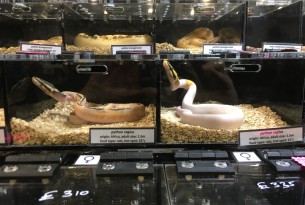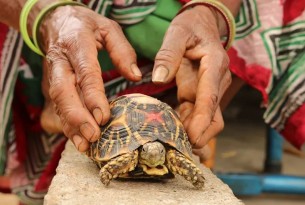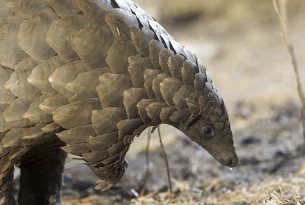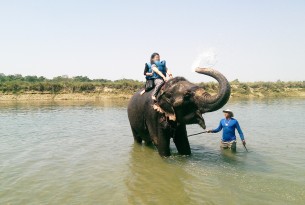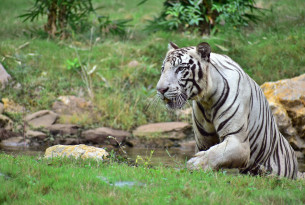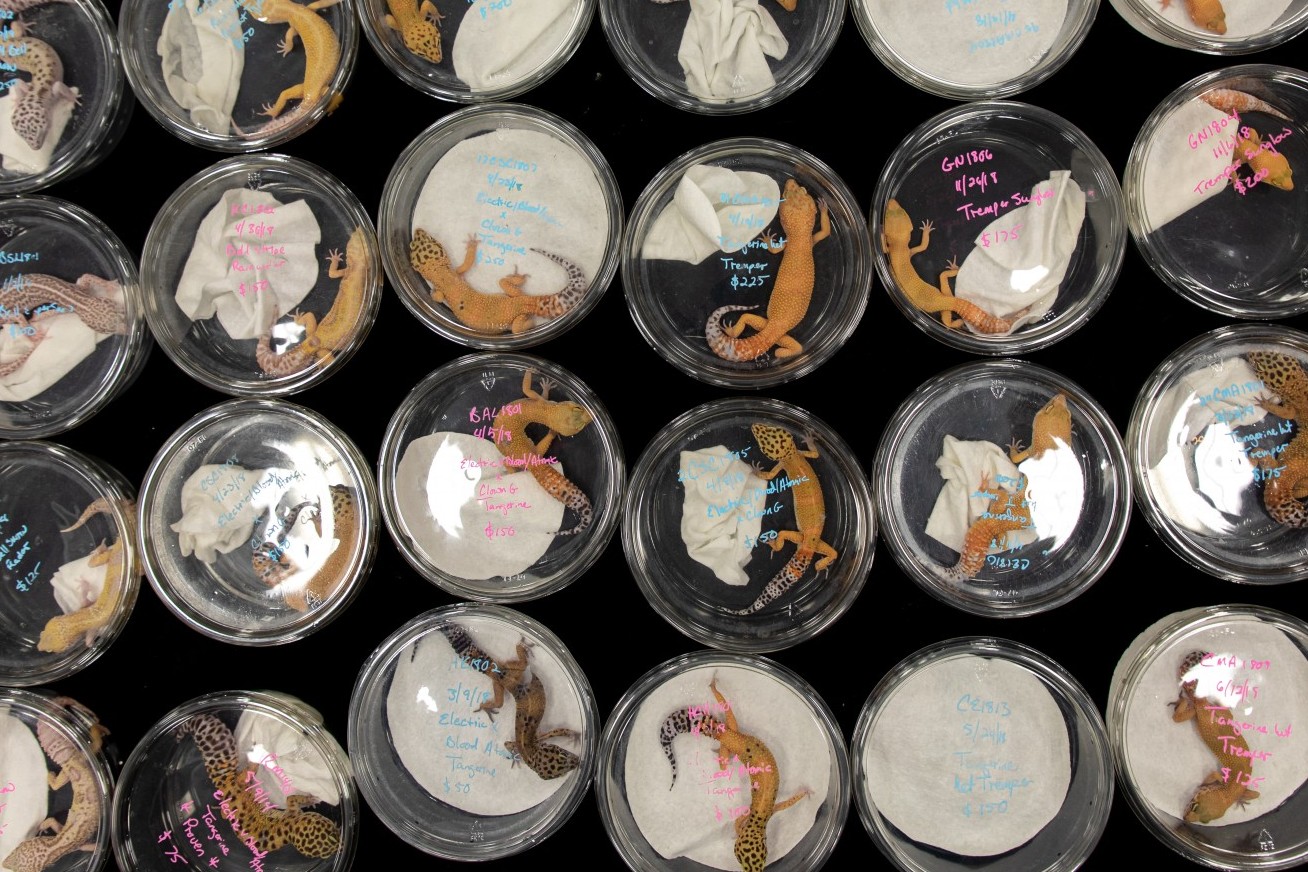
Reptile expos in Canada: risk to animal welfare and public health
Thousands of animals are traded at reptile expos throughout Canada each year. These events pose a risk to animal welfare and public health, yet there is no oversight or protection. Learn more about these risks.
Reptile expos are events where reptiles, amphibians and invertebrates are sold. These events resemble trade shows where sellers have booths to display and sell their products. But in this case, the products are living, sentient animals. Animals are displayed in cramped containers, often stacked on top of each other, to be sold as pets or for breeding purposes.
Public health risks
Reptiles (like snakes and turtles) and amphibians (like frogs and salamanders) carry and shed bacteria such as Salmonella that can cause infections in people and even lead to death; it is especially dangerous to people with a weak immune system. Once these animals are sold as pets, owners, and anyone else who encounters their pets, are at risk.
You can become infected by any reptile, even by healthy ones, and even if you don’t touch them because Salmonella bacteria are shed through feces. Anything the animal touches, like food dishes or their tank, can transmit the bacteria to humans. Public data on exotic pet associated Salmonella cases in Canada is not available, but data collected by the U.S. Centers for Disease Control and Prevention (CDC) shows that a Salmonella outbreak related to turtles affected mostly children younger than five (41%) and a frog-related Salmonella outbreak affected mostly children younger than ten (69%). CDC recommends: “If there are young children in your home, consider pets other than reptiles or amphibians for your family.”
Outbreaks occur frequently throughout North America, the most recent one in Canada was in December 2019, with 92 confirmed cases linked to snakes and the rodents used to feed them.
It is highly problematic that reptiles can be sold to people of all ages and that there are no minimum age restrictions for entering a reptile expo.
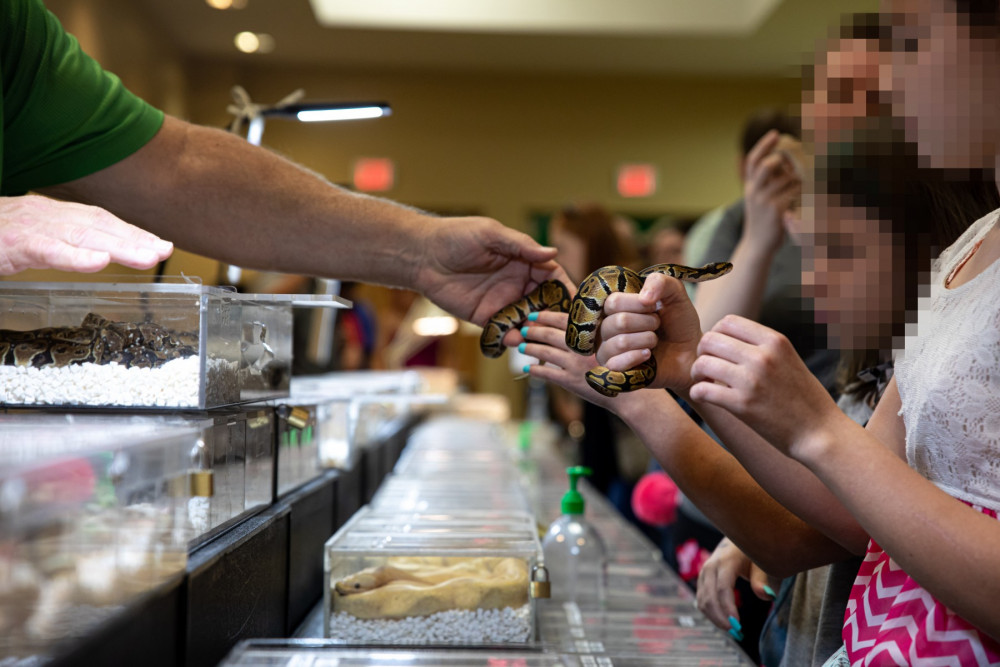
Salmonella is not the only risk
The vast majority of animals sold at reptile expos are captive-bred but reptiles are still poached directly from the wild and imported into Canada for breeding purposes.
Introducing wild caught species into the trade chain can be highly problematic. Snakes and other reptiles can be carriers of zoonotic diseases. Examples of zoonotic viruses that have been isolated from reptiles include the West Nile Virus in crocodiles and Western Equine Encephalitis and Japanese Encephalitis virus in snakes.[1,2] A more recent study discovered that 19 out 20 samples taken from one Ball python farm in West Africa contained at least on type of bacteria of zoonotic concern.[3] This farm housed a wide variety of wild caught and captive bred wildlife species, an environment where the emergence and spread of infectious diseases can occur.
This supply part of the reptile trade is poorly monitored, including here in Canada. Other than turtles and tortoises, reptiles and amphibians can enter Canada without a permit or health certificate.
Expos are also harmful to animal welfare
In 2019, researchers visited multiple exotic expo events, including the largest reptile expo in Canada, to observe the conditions of the animals, Ball pythons in particular, and found the following:
- Inadequate space: animals typically remained in plastic containers for the duration of the event, and many of them were not able to assume normal body posture (i.e., stretch their body in full).
- No provision or access to water for most animals.
- A lack of hiding places, leaving animals fully exposed to visitors, lights and other stimuli, regardless of the shy and/or nocturnal nature of the animal.
- The majority of vendors did not provide written education materials.[4]
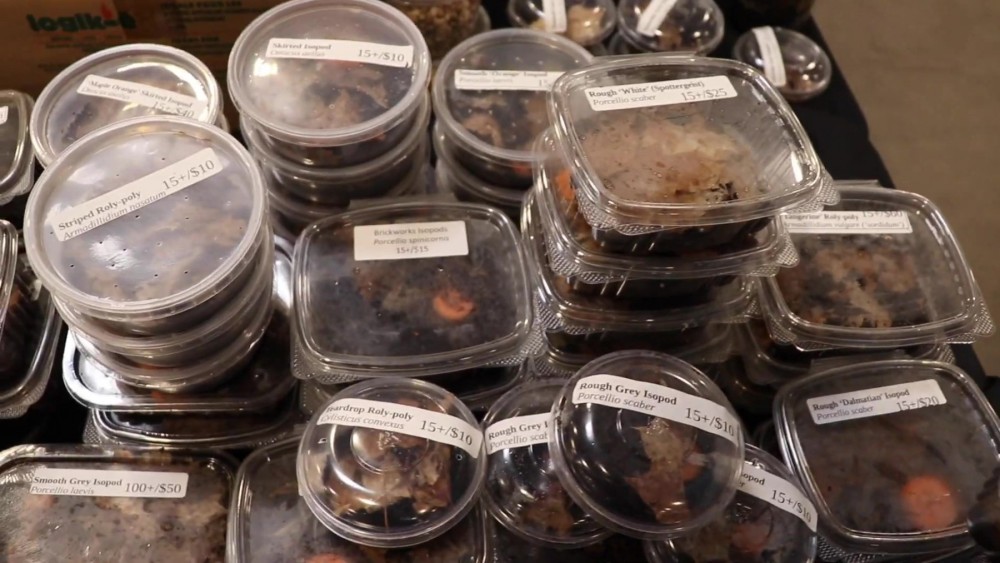
How can we protect animals and people from these risks?
The wildlife trade, including the one in Canada, makes it possible for animals to be poached, farmed and shipped around the world – for pets, food, traditional medicine, luxury goods and entertainment. Curbing the wildlife trade is one of the most effective strategies to protect animals and people. Be part of our growing movement: sign the petition and join World Animal Protection's global campaign calling on Canada and other G20 countries to ban the global wildlife trade.
Sources
[1] Ariel E. Viruses in reptiles. Veterinary research. 2011 Dec;42(1):1-2.
[2] Warwick C, Arena PC, Steedman C, Jessop M. A review of captive exotic animal-linked zoonoses. J Environ Health Res. 2012;12(1):9-24.
[3] D'Cruze N, Bates J, Assou D, Ronfot D, Coulthard E, Segniagbeto GH, Auliya M, Megson D, Rowntree J. A preliminary assessment of bacteria in “ranched” ball pythons (Python regius), Togo, West Africa. Nature Conservation. 2020 May 13;39:73-86.
[4] D’Cruze N, Paterson S, Green J, Megson D, Warwick C, Coulthard E, Norrey J, Auliya M, Carder G. Dropping the Ball? The Welfare of Ball Pythons Traded in the EU and North America. Animals. 2020 Mar;10(3):413.


